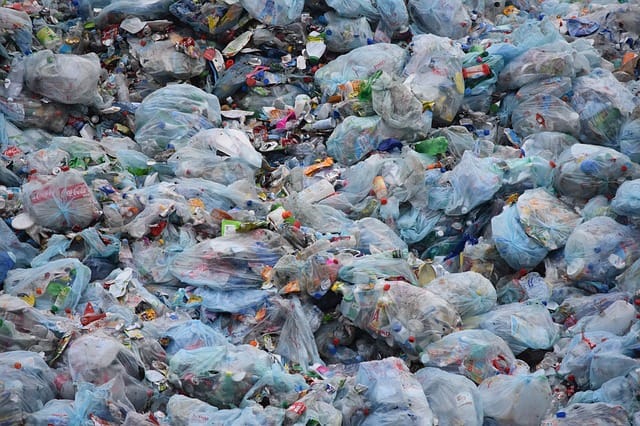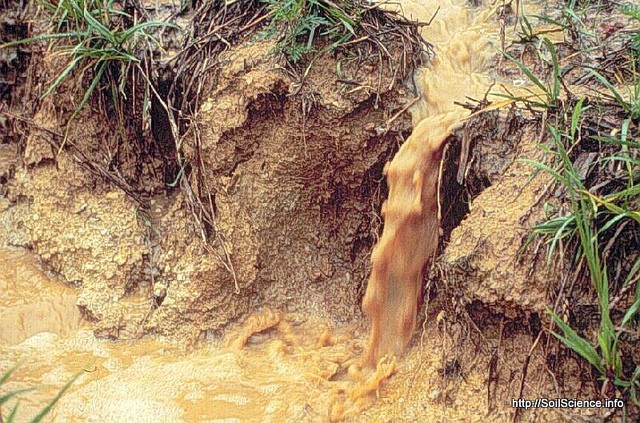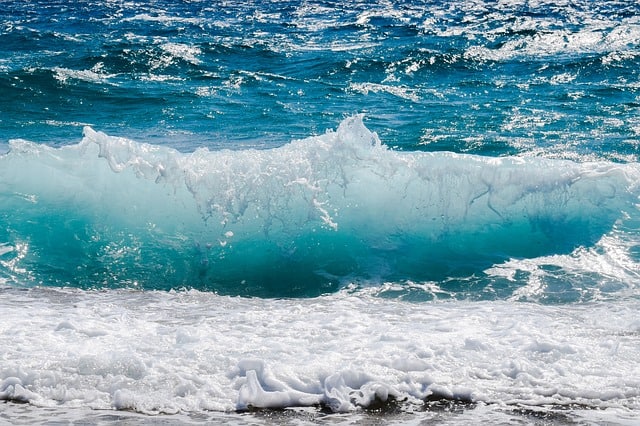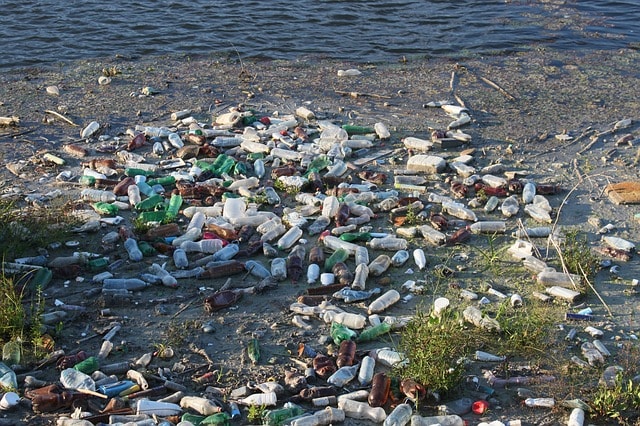What are Different Types of Pollution?
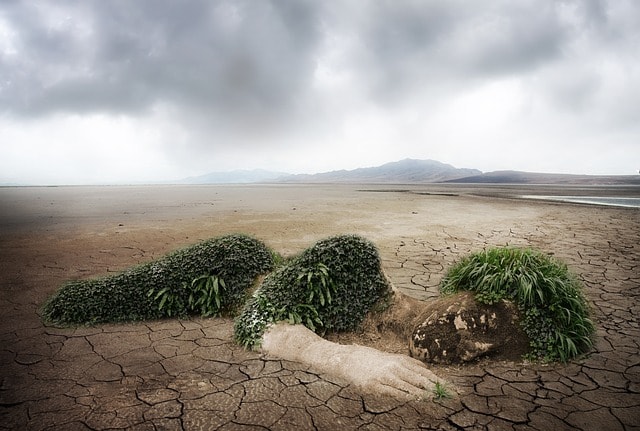
There are various types of pollution i.e. air, water, land, noise, industrial, soil, light, thermal etc. and they are categorized based on the region of the environment which they negatively impact, contributing to the multiple causes of pollution. Accordingly, each and every type of pollution has its own distinguishing causes and environmental effects. Understanding pollution and its various causes can help address the various concerns linked to environmental degradation and destruction, and the dangers it brings to human health.
So much of the habitat destruction and pollution is based on the simple principle that we somehow have been given free license over other species to degrade the planet.
~ Greg Graffin
Pollution is of many kinds, but the commonly known are air, land, and water pollution. Below are the different types of pollution and their distinctive comprehensive explanations.
- Air pollution
Air is the most polluted environmental resource. It is the introduction of harmful substances in the air that results in detrimental impacts to the environmental and humanity. Air pollution reduces air quality by making it unclean or contaminated.
It occurs when harmful substances such as foreign gases, odours, dust, or fumes are released in the air at levels that can harm the comfort or health of animals and humans, or even destroy plant life. Air pollution results from both human and natural activities.
It is caused by emissions from manufacturing industries and power plants, vehicular emissions, smoking, natural events such as volcanic eruptions and wildfire, and burning of waste materials such as wood, rubber and plastics. The common air pollutants include hydrocarbons, volatile organic compounds (VOCs), dust particles, carbon monoxide, sulfur oxides, particulate matter, chlorofluorocarbons (CFCs), and nitrogen oxides.
- Water pollution
Water pollution is the act of contaminating water bodies namely rivers, oceans, lakes, streams, aquifers, and groundwater. It occurs when foreign harmful materials like chemicals, waste matter, or contaminated substances are directly or indirectly discharged into water bodies. Any alterations in the chemical, physical, or biological water properties qualify as water pollution.
Very often, the primary contributors to water pollution are human activities since they introduce substances that contaminate the water with harmful chemicals and toxic materials. Water pollution is categorized into point source, non-point source, and groundwater. Point source water pollution occurs when the contaminants enter a water body from a single identifiable source while non-point source occurs as a result of cumulative effects of different amounts of contaminants.
Groundwater pollution occurs through infiltration and affects groundwater sources such as wells or aquifers. Water is the considered the second most polluted environmental resource after air pollution. The causes of water pollution include:
- The discharge of industrial waste in water bodies
- Agricultural pollution: practices such as the use of pesticides and other agrochemicals that get washed into water systems or infiltrate into groundwater
- Discharge and dumping of waste materials and home made products such as plastics and detergents into water bodies
- Oil spills
- Natural disasters such as floods and hurricanes that lead to intermixing of water with dangerous substances on the land
- Sediments from soil erosion
- Land Pollution
Land pollution is the destruction or decline in quality of the earth’s land surfaces in term of use, landscape and ability to support life forms. Many times, it is directly and indirectly caused by human activities and abuse of land resources. Land pollution takes place when waste and garbage is not disposed off in the right manner and as such, introduces toxins and chemicals on land.
It also occurs when people dump chemical products to soils in the form of herbicides, fertilizers, pesticides, or any other form of the consumer by-products. Mineral exploitation equally leads to the decline in quality of the earth’s land surfaces. In this regard, it has grave consequences for human health, plant life, and soil quality. Acid rain, construction sites, solid waste, mineral exploitation, agricultural chemicals, and deforestations are the primary causes of land pollution.
- Soil Pollution
Soil pollution takes place when chemical pollutants contaminate the soil or degraded by acts such as mining, clearance of vegetation cover, or topsoil erosion. Usually, it happens when human activities directly or indirectly introduce destructive chemicals, substances, or objects into the soil in a way that causes damage to the immediate earthly environment.
As a consequence, soil losses its value of natural minerals and nutrients compositions. Soil degradation also contributes to soil pollution, and it occurs as a result of over-grazing, over-farming, or mining activities. The notable causes of soil pollution include agricultural farming activities, waste dumping on land, industrial activities, mining, and acid rain. Lose of wildlife habitat, soil erosion, reduced crop yields, contamination of food, and desertification are the precise consequences of soil pollution.
- Noise Pollution
Noise pollution is mostly an undesirable sound or sound which generates horrible discomfort on the ears. It is measured in decibels (dB) and sound levels beyond 100 dB can cause permanent hearing loss. The industrial sound limit according to the World Health Organization (WHO) is 75 dB. In the contemporary society, noise has become a permanent aspect owing to the daily activities such as transportation including airports, traffic and railroads, industrial manufacturing, construction works, and concerts.
In contrast to the other types of pollution, noise pollution lacks the element of accumulation in the environment. It merely occurs when sounds waves of intense pressure reach the human ears and may even affect the body muscles due to sound vibrations. Noise pollution similarly affects marine and wildlife animals in the same manner it affects humans, and can even cause their death.
- Thermal Pollution
Thermal pollution occurs when water bodies are degraded in terms of altering their temperatures. It commonly happens when people or industries undertake activities that suddenly decrease or increase the temperature of a natural water body which may include lakes, rivers, oceans or ponds.
Thermal pollution is currently a huge menace and is mainly influenced by power plants and industrial manufacturers that use water as a coolant. Urban stormwater runoff from parking lots and roads also discharges water of elevated temperatures into adjacent water bodies.
When water is either used as a coolant, discharged from stormwater runoff at elevated temperatures, or released from reservoirs with unnaturally cold temperatures, it changes the natural temperature of water bodies. Therefore, thermal pollution is one aspect of the wider subject of water pollution. The alterations of natural water resource temperatures can have dire consequences on aquatic life and the local ecosystems.
- Industrial Pollution
Industrial pollution is the release of wastes and pollutants generated by industrial activities into the natural environment including air, water, and land. The pollutants and wastes from industries encompass air emissions, deposit of used water into water resources, landfill disposal, and injection of toxic materials underground.
Industrial pollution can adversely damage plants, kill animals, cause ecosystem imbalance, and degrade the quality of life. Leading industries such as power plants, steel mills, sewage treatment plants, heating plants, and glass smelting among other production, processing and manufacturing companies are the contributors to industrial pollution.
They release smoke, effluents, material wastes, toxic byproducts, contaminated residues, and chemical consumer products that eventually end up in the environment thereby causing pollution.
- Light Pollution
Light pollution occurs due to lengthened and excessive use of artificial lights, such that it results in the brightening of the skies. As a consequence, it upsets the activities and natural cycles of wildlife and also affects the welfare of humans. Whenever artificial lights are used where they are not intended, it causes a nuisance.
For instance, too much outdoor light intruding into neighbor’s bedrooms can disrupt their sleep. Likewise, too much indoor light has implications on the health of the inhabitants of that room. Light pollution is also referred to as luminous pollution or photo pollution. The types of light pollution include glare, light trespass, and sky glow. City lighting, advertising and billboards, and nighttime entertainments are some of the main contributors of light pollution.
- Radioactive Pollution
It is very uncommon for radioactive pollution to occur, but when it happens the outcomes are catastrophic to the environment and to human health. Due to its intensity, it can cause massive human death, cancers, serious lung disease, organ damage, birth defects, and grave destruction to plant life and animals.
It can also destroy soil, and cause water and air pollution. In the event that there is a radioactive pollution, it can take many years for the environment to regain its natural capacity. The sources of radioactive pollution include uranium mining operations, nuclear power plant accidents, and inappropriate nuclear waste disposal.



